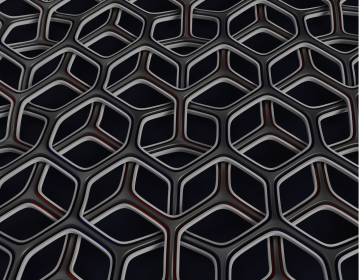CICNDT is newly aware of the the electronic materials series of conferences, particularly the NDT technologies from the 2023 EMC. Rather, the EMC highlights tech that is either already applies in our Non destructive Testing / Non destructive Evaluation equipment, or the new technologies show promise to dramatically improve our data results. CICNDT planned to attend the 2024 Electronic Materials Conference (EMC 24 in Maryland, but exploding work commitments a curtail of. However, we thoroughly reviewed the outcomes from the 2023 EMC and found several intriguing advancements that promise to revolutionize Non-Destructive Testing (NDT) and Non-Destructive Evaluation (NDE) in the near future.
Here are the highlights:
1. High-Resolution Electron Emission Microscopy (EEM) for NDT at the 2023 EMC
Scientists: Tanay Tak, Cameron W. Johnson, Wan Ying Ho, Feng Wu, Mylène Sauty, Alejandro Quevedo, Andreas K. Schmid, Jacques Peretti, Claude Weisbuch, and James S. Speck
Electron Emission Microscopy (EEM) is utilized to image hot electrons emitted during the operation of GaN-based LEDs. This technique provides spatially resolved microscopy of hot electrons, allowing for the detection of non-radiatively-recombined electrons that cross the diode junction and diffuse through the material.
Potential Application in NDT/NDE:
EEM can be adapted for NDT in the aerospace and automotive industries to analyze the electronic properties and integrity of semiconductor devices used in advanced sensors and communication systems. Its ability to detect defects at a microscopic level makes it suitable for ensuring the reliability of critical electronic components in harsh environments.
2. Advanced Thermographic Techniques
Technology Overview:
Thermographic inspection techniques, especially active thermography, involve using thermal cameras and controlled heat sources to detect anomalies by analyzing the thermal response of materials.
Potential Application in NDT/NDE:
In the wind energy sector, active thermography can be employed to inspect large composite structures such as turbine blades for delaminations, cracks, and water ingress. In the marine industry, it is useful for detecting defects in composite hulls and other structural components. Its non-contact nature allows for rapid and extensive inspections in field conditions.
3. In-Situ Compositional Analysis of Metal Oxide Thin Films
Scientists: Rajeswari M. Kolagani, Ryan Paxson, Benjamin Moore, R. Shipra, Jeonggoo Kim, and Mikhail Strikovski
Low Angle X-ray Spectroscopy (LAXS) is used for in-situ compositional analysis of metal oxide thin films, particularly La0.67Ca0.33MnO3-y (LCMO) thin films grown under varying oxygen pressures. This technology helps understand the changes in stoichiometry and its effects on the material properties.
Potential Application in NDT/NDE:
This technique can be utilized in the aerospace and automotive industries to analyze and ensure the quality of thin-film coatings used in various applications, such as sensors and protective layers. It helps in identifying potential defects or inconsistencies in the material composition that could affect performance.
4. Portable X-ray and Computed Tomography (CT) Scanners
Technology Overview:
Portable X-ray and CT scanners provide high-resolution imaging that can reveal internal structures and defects within composite materials.
Potential Application in NDT/NDE:
These scanners are highly relevant for inspecting composite structures in the wind energy and marine industries, where large components like turbine blades and hulls need regular inspection. In aerospace, they can be used for on-site inspection of aircraft components to detect internal defects without disassembly. In the automotive sector, portable CT scanners can ensure the quality of composite parts used in vehicle manufacturing.
5. Acoustic Emission Testing (AET)
Technology Overview:
AET involves monitoring sound waves emitted by materials under stress, useful for real-time monitoring of structural integrity.
Potential Application in NDT/NDE:
In the wind energy sector, AET can monitor the condition of turbine blades during operation, providing early warnings of potential failures. In aerospace, it can be used to monitor the structural integrity of aircraft components in flight. For automotive and marine applications, AET can ensure the integrity of composite materials used in vehicles and vessels, detecting issues before they lead to significant damage or failure.
Looking Forward from NDT Technologies 2023 EMC
As we look forward to the detailed EMC 2024 program (report), we aim to improve and increase our awareness of emerging technologies that could impact the NDT industry. With the advancements in NDE 4.0, we anticipate new tools and methods that will enhance our capabilities in ensuring the safety and reliability of critical structures across various industries.
Stay tuned as we continue to explore and integrate these cutting-edge technologies to provide the best NDT solutions for our clients.
References
1. Tak, T., Johnson, C. W., Ho, W. Y., Wu, F., Sauty, M., Quevedo, A., Schmid, A. K., Peretti, J., Weisbuch, C., & Speck, J. S. (2023). Electron Emission Microscopy of an Electrically Driven III-Nitride-Based LED: Evidence of Lateral Electron Injection at V-Defect Sidewalls. *University of California, Santa Barbara, United States*.
2. Various studies presented at the 2023 Electronic Materials Conference. (2023). Advanced thermographic techniques for composite material inspection in the wind energy and marine industries.
3. Kolagani, R. M., Paxson, R., Moore, B., Shipra, R., Kim, J., & Strikovski, M. (2023). Anion Stoichiometry Modulation and In Situ Compositional Analysis of Functional Metal Oxide Thin Films. *Towson University, United States*.
4. Insights from the 2023 Electronic Materials Conference. (2023). Portable X-ray and Computed Tomography (CT) Scanners for high-resolution imaging of internal structures in composite materials.
5. Research at the 2023 Electronic Materials Conference. (2023). Acoustic Emission Testing for real-time monitoring of structural integrity in the wind energy, aerospace, automotive, and marine sectors.


